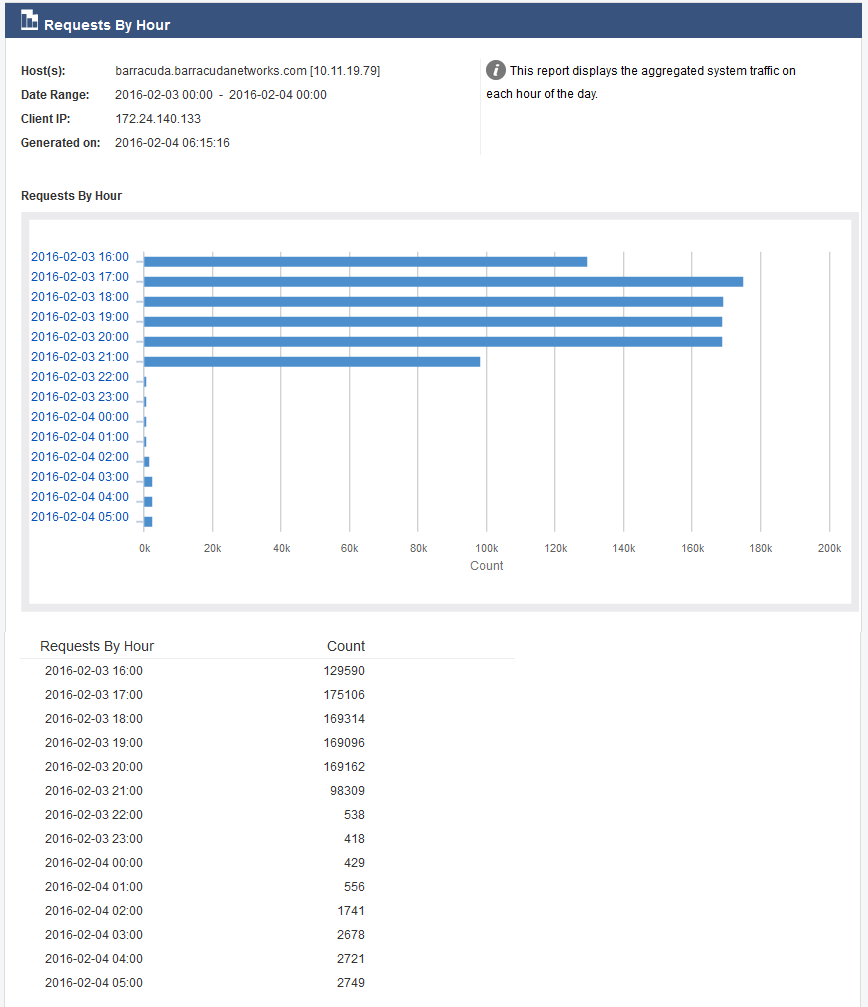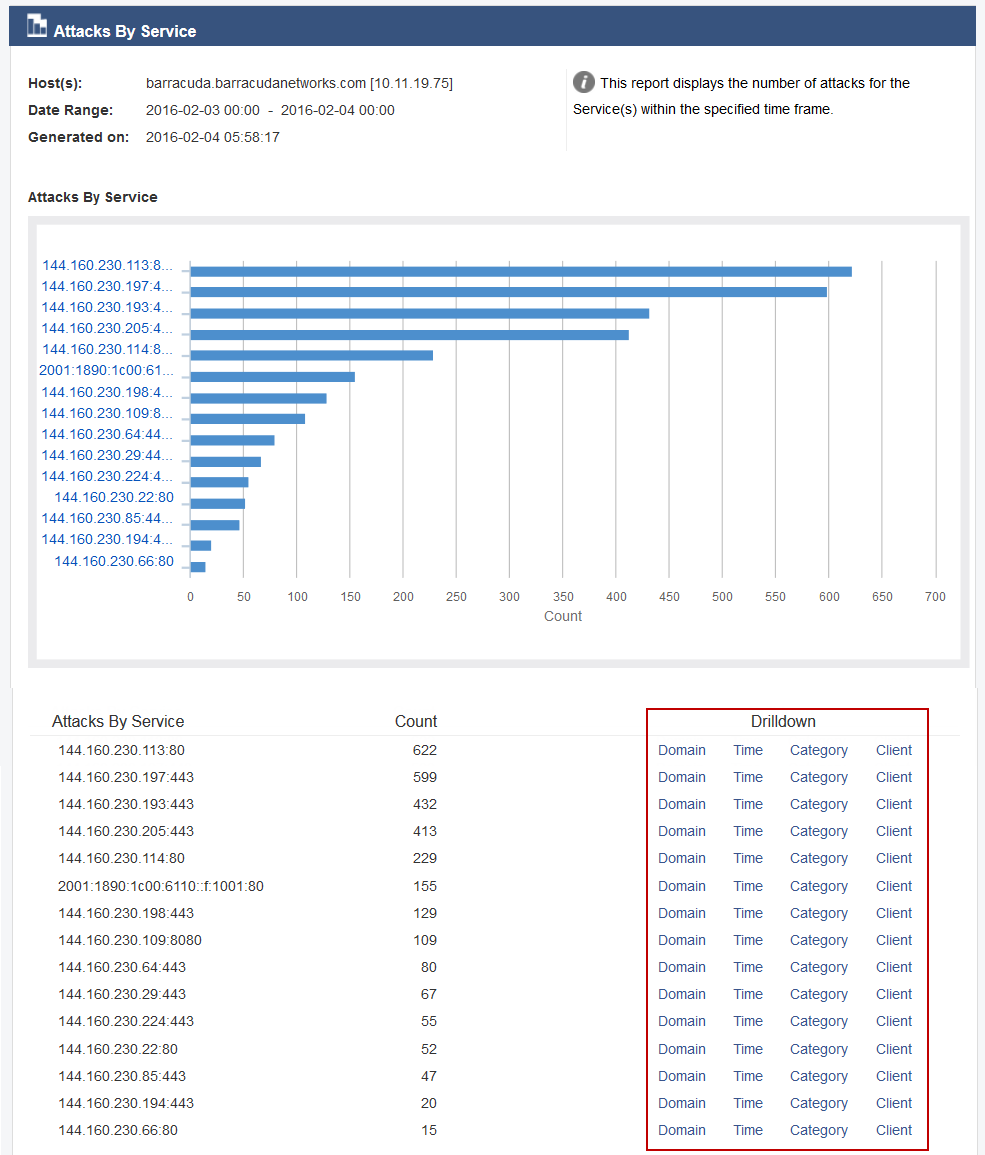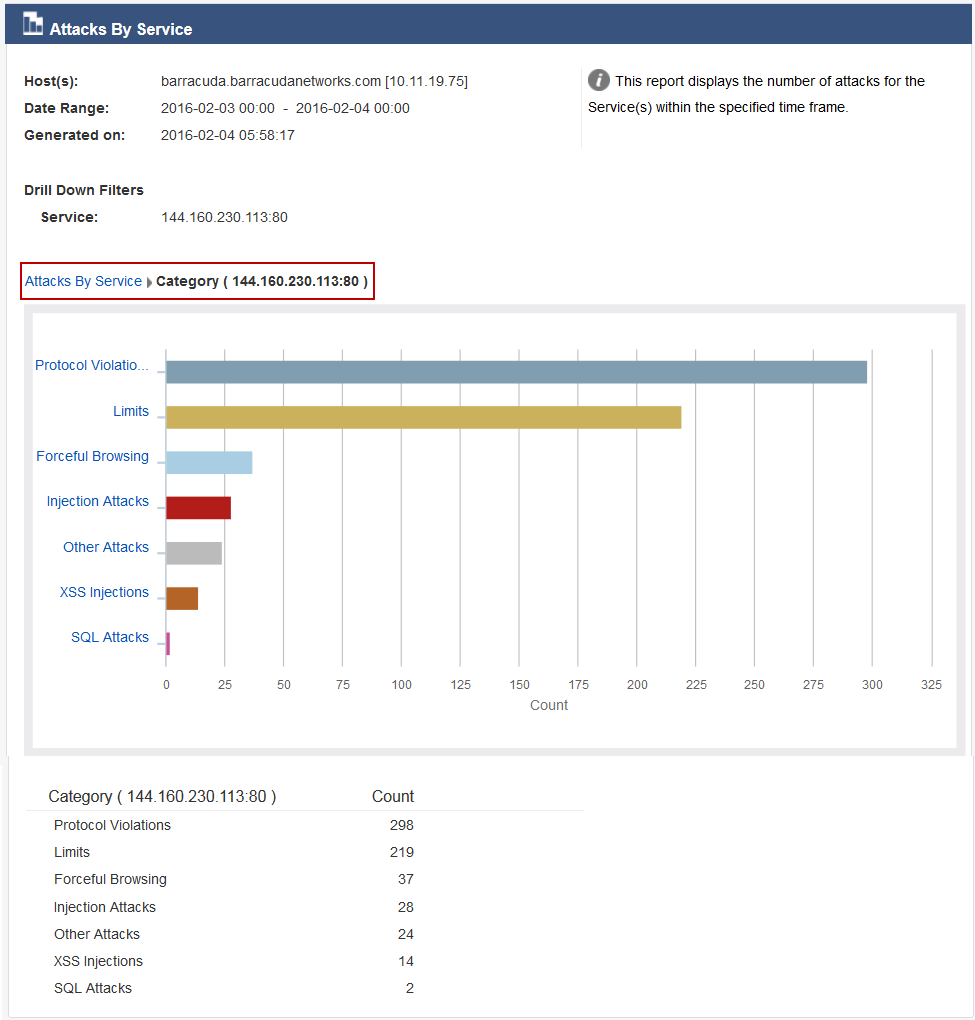The BASIC > Reports page allows you to configure and generate reports of various types, based on all logged information. You can either generate a one-time report or configure the Barracuda Web Application Firewall to automatically generate the reports on an hourly, daily, weekly, or monthly basis. Reports can be emailed to specific email addresses or sent to an FTP server.
The Barracuda Web Application Firewall reports are broadly classified into following groups:
- Security Reports
- Summary Reports
- PCI DSS Reports
- Administration/Audit Reports
- Configuration Summary Reports
- Traffic Reports
- Aggregated System Traffic Reports
- Client Traffic Reports
- Service Traffic Reports
- Server Traffic Reports
Filtering a Report
You can apply a filter to the “Security” and “Traffic” reports and limit a report to specific data. For example, the Requests By Hour report under “Traffic” displays the number of requests received each hour in last 24 hours. To view the number of requests received from a particular client IP address, specify the client IP address in the filter and view the report. To apply a filter for the example above, perform the following steps:
- Go to the BASIC > Reports page.
- In the Report Options section, click Show Advanced Options.
- Select Client IP from the Traffic Filter drop-down list and enter the IP address of the client.
- Scroll down to the Traffic section and click Show Report next to Request By Hour.

Drilling Down a Report
You can drill down some of the reports under “Security” and “Traffic” to view data in more detail. For example, the Attacks By Services report displays the number of attacks on the services. Click the drill down link in the data to view different categories of attacks on the services.


Schedule a Report
- Go to the BASIC > Reports page.
- (Optional) In the Report Options section, click Show Advanced Options and configure filters for Security and Traffic reports.
- Select the check box(es) next to the report type(s) under the report group (Security, Traffic, Audit and System, Config Summary and PCI Reports).
In the Schedule Report section, enter a name for the report, select how you want the report to be delivered (Email or FTP), and how frequently you want the report to be generated automatically.
As a best practice, use a unique account for this integration point and grant it the least level of privileges required, coordinating with the administrator. This account requires read privileges on the Reporting server only for the specific path you indicate in the next field. For additional information, see Security for Integrating with Other Systems - Best Practices .- Click Apply.
In this Section:
